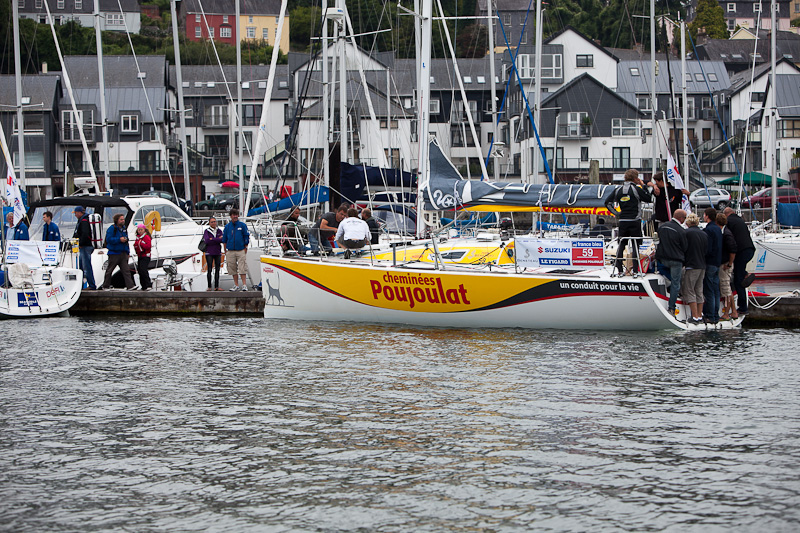Displaying items by tag: Bernard Stamm
After a general recall a 'violent collision' occurred during the build up to the second start between Swiss Bernard Stamm (Cheminée Poujoulat) and Matthieu Girolet (Entreprendre).
The collision was as a result of a port and starboard incident.
As both boats suffered from serious hull damage both skippers decided it was not safe to continue racing and abandoned the Solitaire.
Stamm's Figaro had a conspicuous hole on the bow (below) and despite all the other competitors' shore teams immediately started working on it, the damage was too extensive to be repaired in a reasonable amount of time.
Girolet's breakage was equally evident, and he also reported to have some parts detached inside the boat and there was doubt the rig was still intact.
Stamm will be given a DNF in the final ranking which means the last's time plus two hours. Racing continued for the other 42 skippers, who, before heading offshore had to sail a windward/leeward course between the Seamobile and the Radio France Marks, with a good breeze of 10 to 12 knots.
Bob Bateman's photographs of the damage to the Swiss boat, Bernard Stamm (Cheminée Poujoulat) is below:


Preparing for La Solitaire du Figaro here
Latest news for La Solitaire du Figaro here






















